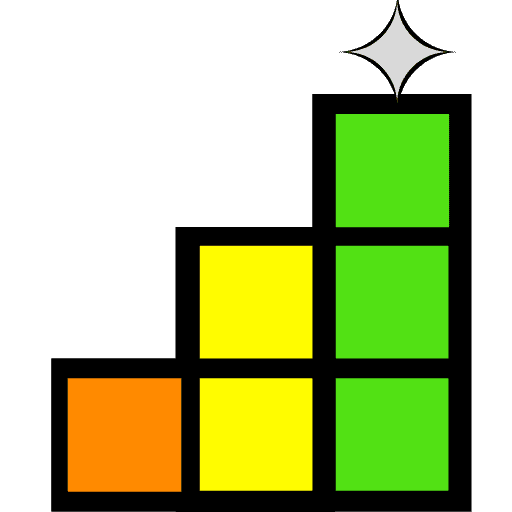The most important dice you need for D&D ultimately depends upon your specific needs. There are some dice that you MUST bring to the table, and others that are situational.
The most important dice you need for D&D are a single d20, d6, d8, and d10. The others are completely dependent upon your class, level, weapons, and reducing how many times you need to roll. In addition to possessing enough dice, you will want your dice to be truly random. The dice you need for D&D will have to go through some quality checks to ensure this.
The Necessary Dice
A single d20, d6, d8, and d10 are the necessary dice you need to play D&D. Beyond this, each class may require different dice, and you may want additional dice for ease of play.
If you are using darts, daggers, or cantrips that deal d4 damage, you will need at least one d4. Likewise, if you use a greataxe, roll barbarian hp, or have some other big use you will need at least one d12. Baring very specific instances like these, you will not need d4s or d12s.
To make your life easier, you should get enough dice to only need to roll once for something. For example, if you have a spell or attack that deals 2d8 worth of damage, it would be worth it to invest in at least two d8s. This allows for much quicker rolls and calculations at the table.
Now you know which dice are the most important to have. But how do you tell them apart?
How to Tell Dice Apart
Telling dice apart can be done with two methods.
- Count the sides on each die. The total number of sides tells what type of die it is (6 sides makes it a d6).
- Learn the shapes of each die. With this method, you only need to look at a die to tell what it is.
Dice Shapes
D4 – Shaped like a triangle or a hat. Has a sharp point at the top.
D6 – Shaped like a cube or a block. This die tends to appear in board games.
D8 – Shaped like a diamond, or two triangles put together.
D10 – A bloated, rounded diamond. Similar to a d8 but with more sides, making it a bit thicker and rounder.
D12 -Shaped like an octagon with a flat top and bottom.
D20 – the closest die to a circle. This has more sides than any other die.
Now that you know how to identify each die, let’s go over what each type of die is are used for.
Dice Uses
Next, let’s go over what each type of die is used for in D&D. As you will see, some dice are more commonplace than others, which makes them necessary to have.
D4s: Niche Dice
D4s only become necessary dice when you want small boosts. This includes using the cantrip Guidance, the spell Bless, or other small things like Favored Foe.
D4s can be used for small weapons such as darts, daggers, or improvised weapons. Lastly, they can be used in some main spells like Magic Missile, but overall usage of these dice are rare. If you use d4s, you will generally only need one in your collection.
D6s: Quantity Dice
You can never have enough d6s. These dice are used for many weapon profiles, most spells, and many class features. The biggest reason why you can never have enough d6s is the sheer quantity of dice required when they are used.
By level 5, many classes will want a lot of these in their arsenal. Spellcasters will want at least eight d6 for fireball, rogues will want at least four d6 for sneak attack when striking with a short sword, and so on. If you are ever wondering what dice to get a large amount of, get d6s as they tend to be used in the highest volumes.
D8s: Quality Dice
D8s are some of the most crucial and core dice you need for D&D. Like d6s, they are used almost everywhere. Many weapon profiles, spells, and class features have you use d8s. The major difference between d8s and d6s is the volume of dice used.
D8s are usually rolled individually. If you roll a d8 on a weapon attack, you aren’t rolling a second. If you roll a d8 with a class feature, that class feature doesn’t stack d8s. Some spells and abilities use more than a single d8, but they still require far fewer d8s compared to d6s.
D10s: Singular Dice
Like d8s and d6s, d10s are used in weapon profiles, spells, and some class features. The main difference is that these dice are used far less often. Not every class requires these dice at all. And when you do need them, you generally only need one.
D12s: Big Dice
There is always a chunky feel to these dice. You use them to make a big hit with a greataxe, a health roll when leveling as a barbarian, or rolling big damage on a Witchbolt. The uses of d12 are limited, and are not common in D&D.
D20s: Everything Dice
Before your roll any other die in D&D, you must roll a d20. Many times you will roll d20s multiple times in a session without rolling another die. These dice are responsible for attacks, saves, checks, and everything in-between! This is the most common dice you need for D&D, so you need to make sure that you have at least one good d20.
But how do you gauge the quality of your d20 and other dice?
Why Quality Dice are Important
That is ANOTHER NATURAL 1!!! Why do I keep rolling terribly?
If you have ever asked yourself this question, the quality of your dice may be to blame.
Rolling poorly (or too well) isn’t always because of luck. Statistically speaking, you have a 5% chance to roll a natural 1 on a d20, and a .25% chance to roll two natural 1s in a row. This is only if the die is made well and correctly balanced. If you have an especially badly balanced die, you might actually have a 25% chance to roll a natural 1 on 1d20 and a 1.25% chance to roll two natural 1s in a row. This is a HUGE difference. So, how can you tell if you have a bad die or a quality die?
The first and easiest way is to avoid the cheap dice. If you get dice through a reputable vendor like Dice Envy, your dice are much more guaranteed to be an excellent quality. Your dice should be balanced to give you a greater statistical chance of success.
If you have cheap dice, then you can test them out with the salt water method. Keep in mind that this method only works for plastic or resin dice. Here is a video to test if your cheap dice are decent quality.
Getting Your Starter Dice Set
Thus far you have learned about the dice you need for D&D and are ready to get some! But where should you get your dice? You could ask friends who have bags and bags of dice, but without a doubt you want your own.
If you just want a ton of dice, you can go for the good ol’ pound of dice. This is a cheap way to get a lot of dice, and many D&D conventions have this type of option. With cheap dice, you will always run the risk that they are poorly balanced so you will have to test them out.
If you wish to get a a fancy dice set (that includes one die of each type), then you could go for metal, wood, or other high quality material. I personally shop from Dice Envy since the dice are excellent quality and balanced with many different design choices. Another option is to head to your local game store and check out what they have for sale.
With dice sets being so popular, you should have no lack of options available to you. For many of us, collecting dice sets becomes a bit of a hobby. So you may quickly find that you have more dice than you know what to do with!
Conclusion
While the only dice you truly need for D&D can be minimal in number, you want to have enough dice for all the spells and abilities of your character. Re-rolling slows down the game and is a pain to calculate. And relying on other players for your dice becomes a hassle for both you and them. This is why you need to be prepared with your own dice and know what they look like and do. You also want to feel confident that your dice are high quality and balanced.
Next, make sure to check out what books you need for D&D!
I hope that you have found this article helpful.
This has been Wizo, and keep rolling!
Find us on Twitch:
https://www.twitch.tv/levelupcorner
Want to support our creators? Find our Patreon here:




